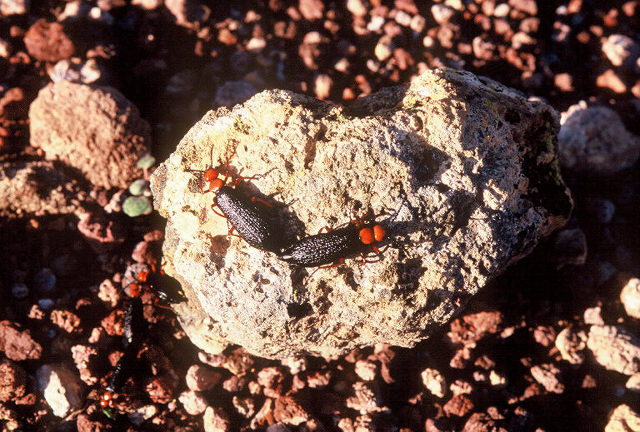
These are blister beetles on the cinder cone to the south of the Tecolate campground. There were literally thousands of them. If I could have detected the pheromones they were giving off... From what I heard, they always congregate around this time of the year. The two in the center are literally connected. They appear to be able to have sex for hours. One drags the other all over the place.
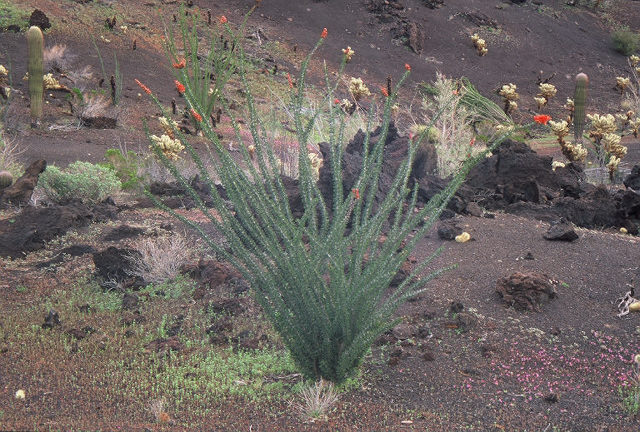
This image of a blooming ocotillo was taken just up the hill from my campsite. There are also more nama demissum and some (presumably) "Teddy Bear cholla".
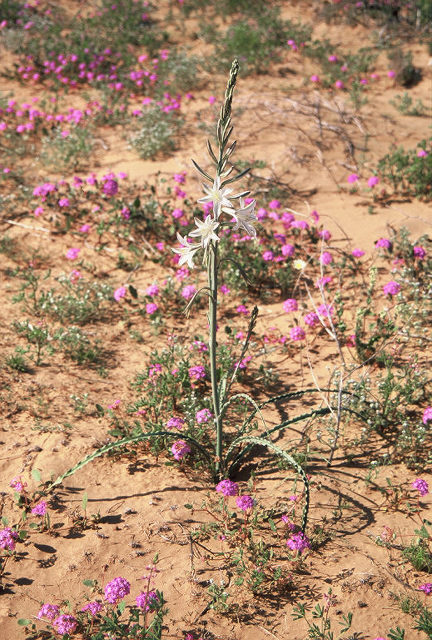
I have now traveled to the southern end of the Pinacate where the massive sand dunes are. This is an Ajo Lily (herperocallis undulata). In wet years, they can grow up to five feet high. I saw some about three feet high. They were also growing in what were otherwise creosote flats. It was pretty impressive to these flowers growing in what is the driest part of north america (just creosote and white bursage). I have heard that their bulbs can be many feet underground.
In this particular location, they are growing amidst purple sand verbena (possibly abronia villosa).
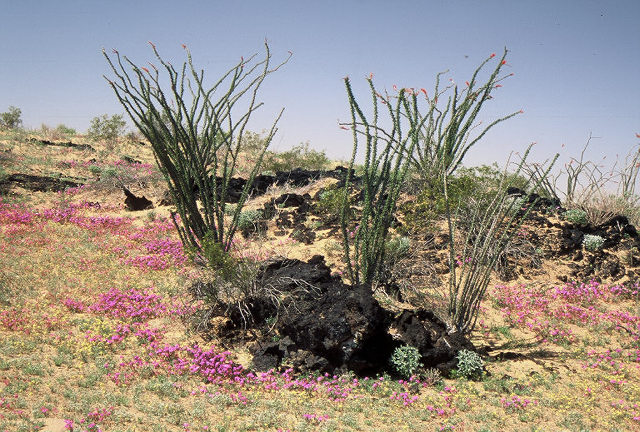
Here are more sand verbena and some ocotillos growing in that same region. There are some evening primroses (oenothera species) that were blooming nicely once the sun set.
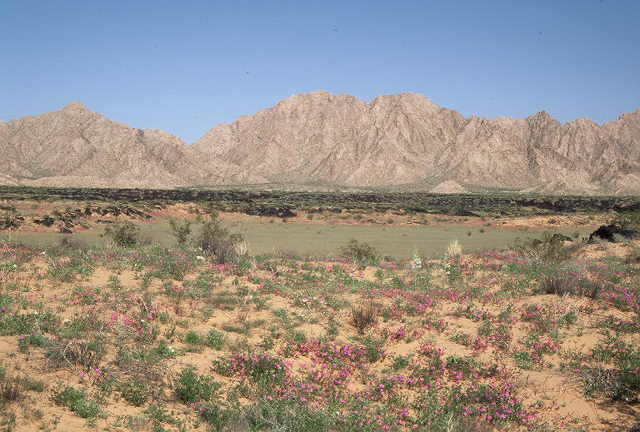
The is the Sierra Blanca which lies between the main pinacate lava fields and the sand dunes. Sand verbena is visible throughout and several ajo lilies can be seen as well.

I hiked up into the dunes. It was, unfortunately, a very windy day as the blowing sand at the top of the dune suggests. From high on the dunes you can see the water in the gulf of california and you can see the town of Puerto Penasco (which we americans tend to call Rocky Point).
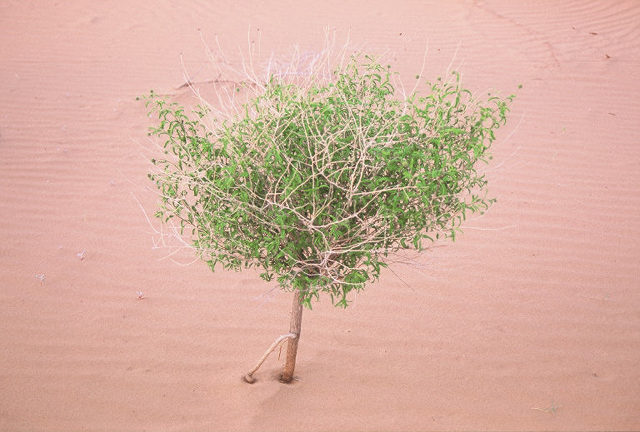
Many of the plants growing in the dunes had atypical growth patterns. This is encelia frutescens (one of the plants commonly referred to as brittlebush). It would never have this odd shape in any other environment.
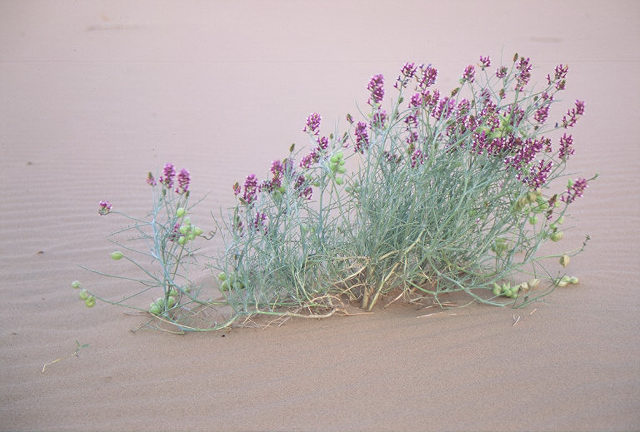
This is commonly referred to as locoweed. It is in the genus astragalus and as the previous link describes it can be toxic when ingested. Note the visible seed pods which look like paperbags). There were quite a few of these growing high up on the dunes. There was very little else growing in the higher reaches of the dunes. (If anyone knows the actual species, let me know.)
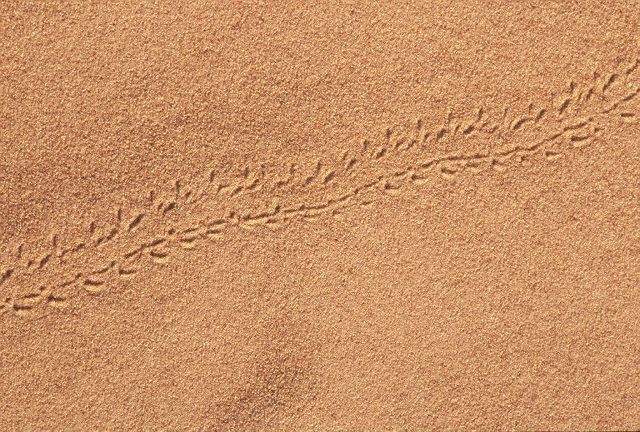
These are the tracks of some beetle roaming around on the dunes.
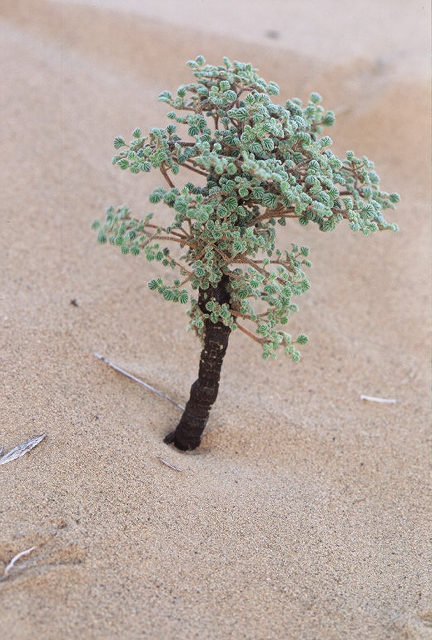
This is Tiquilia plicata. There were many of these in the sand. In most cases, all you could see was the very top of the plant. They appeared almost flat. In this case, I guess the wind had blown the sand away and exposed more of the plant. (Or perhaps it is the reverse. Maybe in this case, the sand didn't cover the plant after it grew...) This is maybe five inches high.
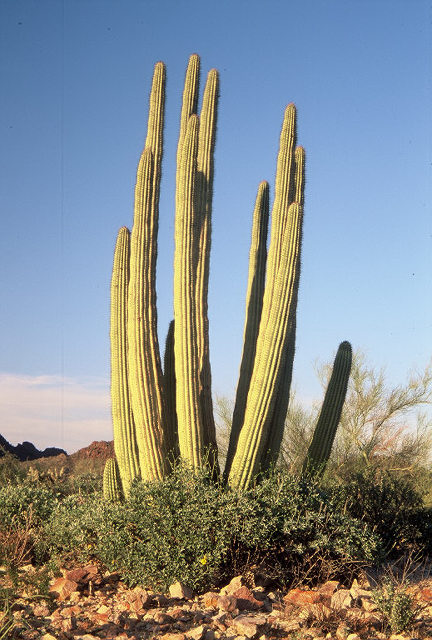
After leaving the Pinacate, I spent maybe 24 hours at Organ Pipe National Monument. This is a photo of one of the organ pipes.
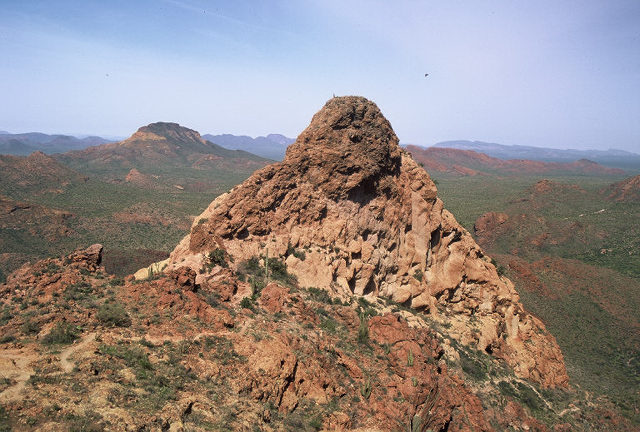
The hike up to Bull Pasture is very nice. This is a view from that trail looking back into the valley below. This particular trail has some wonderful vegetation. You can find saguaro cacti and junipers growing next to each other. There was an interesting large succulent (possibly a stonecrop) and there are large desert olives (forestiera species) growing in Estes canyon below.
Back to Springbreak2010 - Part 1,
Back to Drew's Home Page, Photo Page
June 24, 2011 - ( milsom@physics.arizona.edu)